In Davis County, UT, rental property maintenance isn’t something landlords can afford to put on the back burner. With long winters, hot summers, and changing tenant needs, property systems are under constant strain. To avoid high repair costs, legal issues, and frustrated tenants, smart landlords turn to a preventative approach that aligns with the seasons.
At PMI Northern Utah, we work with local property owners to help them stay ahead of repairs and coordinate services efficiently. For example, landlords looking to reduce turnover time often benefit from these quick cleaning strategies for efficient turnovers, which can help streamline maintenance schedules and avoid costly delays.
Key Takeaways
- Preventative maintenance lowers emergency repair costs and increases system longevity.
- Davis County’s seasonal weather requires strategic upkeep for HVAC, roofs, and plumbing.
- Routine inspections are essential for legal compliance and tenant accountability.
- Well-maintained properties command higher rent and improve retention.
- PMI Northern Utah provides full-service vendor coordination and seasonal planning.
Why Preventative Maintenance Is Essential in Davis County
From heavy snowfall in the winter to scorching summer heat, Utah's climate puts properties through extreme seasonal changes. These fluctuations can damage roofs, pipes, HVAC systems, and even landscaping if left unchecked. Add tenant wear and tear to the mix, and it's easy to see how problems can escalate if not addressed early.
Proactive maintenance planning is the best way to avoid emergency repairs and maintain compliance with Utah’s landlord-tenant laws, which require landlords to provide safe, functional housing. Implementing a reliable system protects your asset and ensures tenants stay longer, because they know the home is well cared for.
A Season-by-Season Maintenance Plan for Davis County Rentals
Planning maintenance by season spreads the workload and helps landlords tackle issues before they become expensive repairs.
Spring
- Inspect the roof for ice or wind damage from winter storms
- Clean gutters and downspouts to prevent drainage issues
- Test and repair sprinkler systems before summer heat
- Re-seal windows and exterior doors to boost energy efficiency
- Schedule an A/C system inspection and filter replacement
Summer
- Change HVAC filters monthly and monitor cooling system performance
- Check for sun damage to siding, window seals, and paint
- Trim trees and overgrown vegetation to prevent structural interference
- Inspect outdoor features like patios, decks, and fences for wear
- Test plumbing fixtures for slow leaks or reduced water pressure
Fall
- Flush the water heater to clear sediment buildup
- Service heating systems and check furnace efficiency
- Clear leaves from gutters and outdoor drains to prevent clogs
- Check attic insulation and reseal windows before winter arrives
- Inspect the roofing for missing shingles or flashing issues
Winter
- Insulate exposed pipes to prevent freezing
- Test carbon monoxide and smoke detectors
- Monitor the roof for ice dams and water accumulation
- Keep pathways clear of snow and ice for tenant safety
- Ensure emergency heating systems are operational
Sticking to a seasonal maintenance routine like this reduces long-term expenses and keeps your rental in great shape year-round.
Why Proactive Maintenance Pays Off
Skipping regular upkeep may seem like a money-saver at first, but the long-term consequences can be costly. Here’s how preventative care supports your rental business:
Reduced Emergency Costs
Addressing issues early prevents them from becoming urgent repairs, which often come with premium labor rates and tenant dissatisfaction.
Extended System Life
Maintaining HVAC, plumbing, and appliances ensures better performance and avoids the need for premature replacements.
Improved Tenant Retention
Tenants value responsive landlords. Preventative care communicates that you take their comfort and safety seriously, making them more likely to stay.
Legal Compliance
Utah law requires landlords to provide habitable living conditions. Failing to maintain heating, water, or safety systems could lead to penalties or lawsuits.
Increased Property Value
Regular maintenance helps your property stay attractive to both renters and future buyers. Curb appeal and functionality make a strong first impression.
Still wondering who’s responsible for what? This guide on who pays for rental maintenance in Hooper, UT, can help you understand what costs fall on landlords versus tenants.
The Role of Routine Inspections in Property Maintenance
Routine inspections are one of the most powerful tools for landlords. They allow you to track the condition of the property, catch issues early, and maintain lease compliance.
Move-In Inspections
- Document the condition of the property thoroughly
- Include photo evidence of every room, appliance, and fixture
- Review with tenants to set expectations and avoid future disputes
Mid-Lease Inspections
- Identify hidden damage like leaks, HVAC problems, or neglected cleaning
- Reinforce rules about unauthorized modifications or pet damage
- Update seasonal maintenance needs as needed
Move-Out Inspections
- Compare against move-in documentation to assess wear and damage
- Justify fair security deposit deductions
- Create a turnover checklist for cleaning and repairs
Routine inspections also provide peace of mind. They confirm that tenants are taking care of the property and help you stay proactive about upkeep. For a closer look at landlord responsibilities, this article on whether property managers pay for repairs offers helpful insight.
How PMI Northern Utah Simplifies Maintenance for Landlords
Handling seasonal tasks, scheduling contractors, and keeping records can quickly overwhelm even experienced landlords. PMI Northern Utah offers full-service maintenance coordination to make things easier:
- Tailored Maintenance Schedules: Custom plans based on property age, size, and condition
- Trusted Vendor Network: Access to reliable, pre-screened HVAC, plumbing, and handyman professionals
- 24/7 Emergency Response: Fast handling of after-hours issues to reduce damage and tenant complaints
- Owner Portal Access: Real-time tracking of service requests, approvals, and maintenance history
- Planned Inspections: Mid-lease and turnover inspections to manage risks and avoid surprises
Our team ensures that nothing falls through the cracks, so you can focus on growing your portfolio instead of chasing down repair techs.
Conclusion
Maintaining a rental in Davis County takes more than just fixing things when they break. A preventative maintenance plan gives you long-term savings, satisfied tenants, and a more stable investment. With seasonal planning, inspections, and a trusted partner like PMI Northern Utah, your property can stay in excellent condition all year long.
Ready to make rental maintenance simpler and more effective? Reach out to PMI Northern Utah to build a custom plan that protects your investment and gives you peace of mind.
FAQs
How often should I inspect my rental property in Davis County?
It’s best to inspect at move-in, mid-lease (every 6 months), and move-out to stay ahead of issues and enforce lease terms.
Do tenants have to pay for any maintenance costs?
Tenants may be responsible for minor repairs or damage they cause, but landlords must cover habitability-related maintenance unless otherwise agreed in the lease.
What is considered an emergency repair in Utah?
Loss of heat, plumbing issues like burst pipes, and anything affecting health and safety—like carbon monoxide alarms or roof leaks—are emergencies.
When should I schedule HVAC maintenance?
Have your HVAC system serviced twice a year—once in the spring before cooling season and once in the fall before heating season.
Can PMI Northern Utah handle maintenance for multiple properties?
Absolutely. Whether you manage one unit or a growing portfolio, PMI Northern Utah can coordinate maintenance across all your rental properties efficiently.


